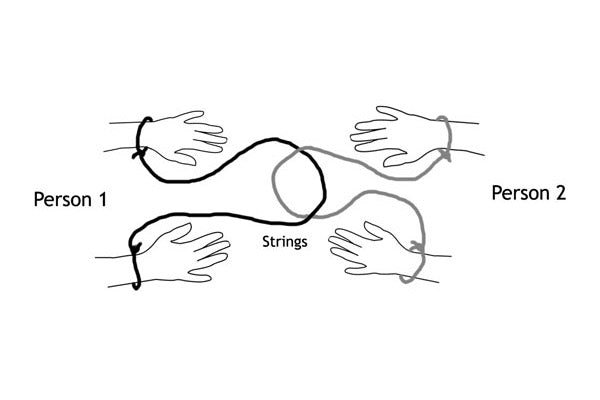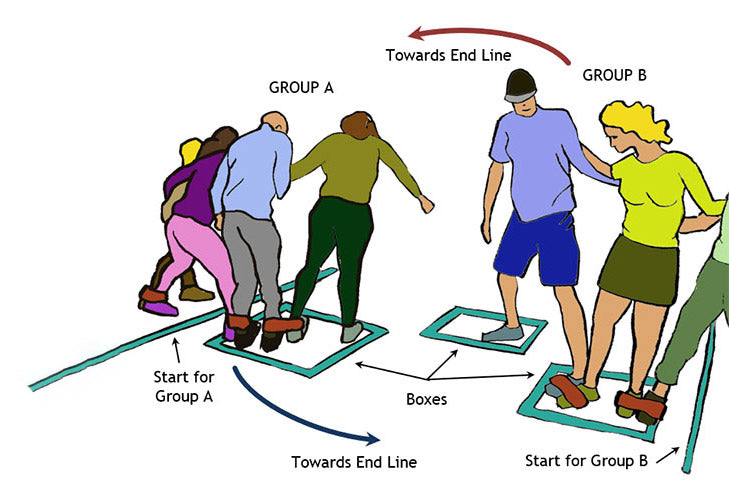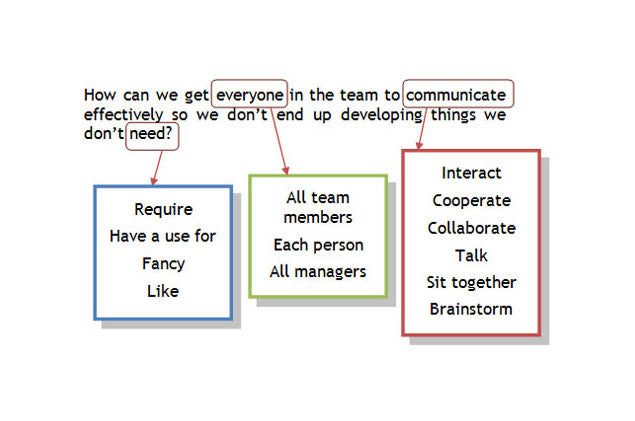Purpose
This is a team building exercise where group members need to solve a problem together. Only two people are involved in the actual task and they cannot be replaced. Other team members should provide support or suggest solutions for the two people to follow through. As a result, this exercise provides ample opportunities to see how teams approach a given problem, communicate ideas and solve problems.
Objective
Untangle yourself from the other person while adhering to the rules.
What You Need
- Two pieces of strings about half a meter each for each group of four.
- A copy of the Instruction Sheet for each group.
Setup
- Divide the delegates to groups of four.
- Provide two strings to each group.
- Ask each group to nominate two people for the exercise while others provide support and suggest solutions to solve the problem.
- Distribute a copy of the "Instruction Sheet" to each group.
- Ask the groups to tie the hands of the two volunteers using the instructions provided.
- Allocate 5 minutes for this initial setup.
- Once all groups are ready, explain that the objective is to get untangled without tampering with the knots, breaking or cutting the strings. All four members of each group must work together as a team to solve the problem.
- Allocate 15 minutes for this part.
- Observe all groups so you can provide feedback about their teamwork during debriefing.
- You can run it as a competition between groups in order to add a bit of time pressure to the problem solving task. In this case, place groups wide apart so they cannot see each other easily.
- After the allocated time, ask those who had successfully completed the task to demonstrate their solution.
- In case no one could find a solution, you can present the Standard Solution. Make sure to do this before moving on so that delegates don’t remain preoccupied with the task.
- Follow with a discussion.
Timing
Explaining the Exercise: 5 minutes
Activity: 5 min setup + 15 min problem solving = 20 minutes
Group Feedback: 10 minutes
Discussion
What do you think of your team’s approach to solve the problem? Were the volunteers good at listening to ideas suggested by other team members? How was the quality of verbal communication? Could people quickly explain what they meant when they wanted to share an untangling strategy with the volunteer and instruct them to follow on their ideas? Did your group nominate a leader to coordinate activities? Did someone automatically assume the role of a leader? What would you do differently if you were going through this exercise again? What did you learn from other groups’ approaches?
Soft Skills Training Materials
Get downloadable training materials
Online Train the Trainer Course:
Core Skills
Learn How to Become the Best Trainer in Your Field
All Tags
Training Resources for You

Course Design Strategy
Available as paperback and ebook

Free Training Resources
Download a free comprehensive training package including training guidelines, soft skills training activities, assessment forms and useful training resources that you can use to enhance your courses.

Our Comprehensive Guide to Body Language

Train the Trainer Resources
Get Insights - Read Guides and Books - Attend Courses
Training Materials
Get downloadable training materials on: Management Training, Personal Development, Interpersonal Development, Human Resources, and Sales & Marketing














Leave a comment
All comments are moderated before being published.
This site is protected by hCaptcha and the hCaptcha Privacy Policy and Terms of Service apply.